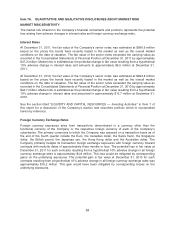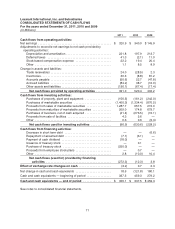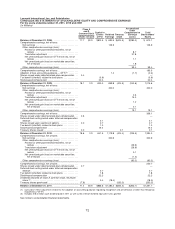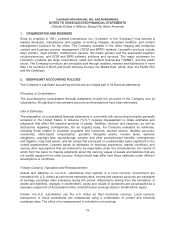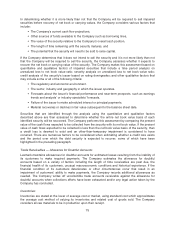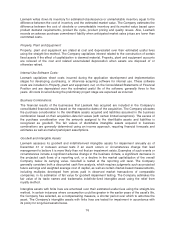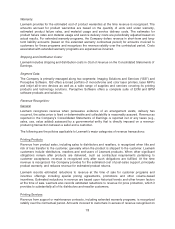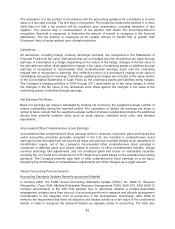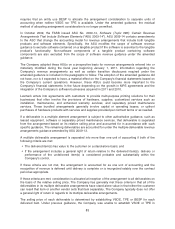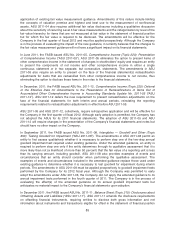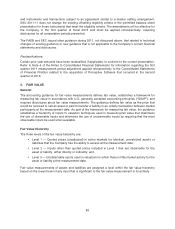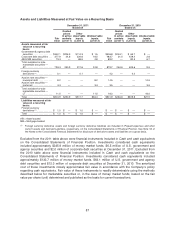Lexmark 2011 Annual Report Download - page 81
Download and view the complete annual report
Please find page 81 of the 2011 Lexmark annual report below. You can navigate through the pages in the report by either clicking on the pages listed below, or by using the keyword search tool below to find specific information within the annual report.Long-Lived Assets Held and Used:
Lexmark performs reviews for the impairment of long-lived assets whenever events or changes in
circumstances indicate that the carrying amount of an asset may not be recoverable. If the estimated
undiscounted future cash flows expected to result from the use of the assets and their eventual
disposition are insufficient to recover the carrying value of the assets, then an impairment loss is
recognized based upon the excess of the carrying value of the assets over the fair value of the assets.
Fair value is determined based on the highest and best use of the assets considered from the
perspective of market participants.
Lexmark also reviews any legal and contractual obligations associated with the retirement of its long-
lived assets and records assets and liabilities, as necessary, related to such obligations. The asset
recorded is amortized over the useful life of the related long-lived tangible asset. The liability recorded
is relieved when the costs are incurred to retire the related long-lived tangible asset. The Company’s
asset retirement obligations are currently not material to the Company’s Consolidated Statements of
Financial Position.
Financing Receivables:
The Company assesses and monitors credit risk associated with financing receivables, namely sales-
type capital lease receivables, through an analysis of both commercial risk and political risk associated
with the customer financing. Internal credit quality indicators are developed by the Company’s credit
management function, taking into account the customer’s net worth, payment history, long term debt
ratings and/or other information available from recognized credit rating services. If such information is
not available, the Company estimates a rating based on its analysis of the customer’s audited financial
statements prepared and certified in accordance with recognized generally accepted accounting
principles. The portfolio is assessed on an annual basis for significant changes in credit ratings or other
information indicating an increase in exposure to credit risk. Quantitative disclosures related to
financing receivables have been omitted from the Notes to Consolidated Financial Statements as these
balances represent less than 2% of the Company’s total assets.
Environmental Remediation Obligations:
Lexmark accrues for losses associated with environmental remediation obligations when such losses
are probable and reasonably estimable. In the early stages of a remediation process, particular
components of the overall obligation may not be reasonably estimable. In this circumstance, the
Company recognizes a liability for the best estimate (or the minimum amount in a range if no best
estimate is available) of its allocable share of the cost of the remedial investigation-feasibility study,
consultant and external legal fees, corrective measures studies, monitoring, and any other component
remediation costs that can be reasonably estimated. Accruals are adjusted as further information
develops or circumstances change. Recoveries from other parties are recorded as assets when their
receipt is deemed probable.
Waste Obligation:
Waste Electrical and Electronic Equipment (“WEEE”) Directives issued by the European Union require
producers of electrical and electronic goods to be financially responsible for specified collection,
recycling, treatment and disposal of past and future covered products. The Company’s estimated
liability for these costs involves a number of uncertainties and takes into account certain assumptions
and judgments including average collection costs, return rates and product lives. The Company adjusts
its liability, as necessary, when a sufficient level of entity-specific experience indicates a change in
estimate is warranted.
77



